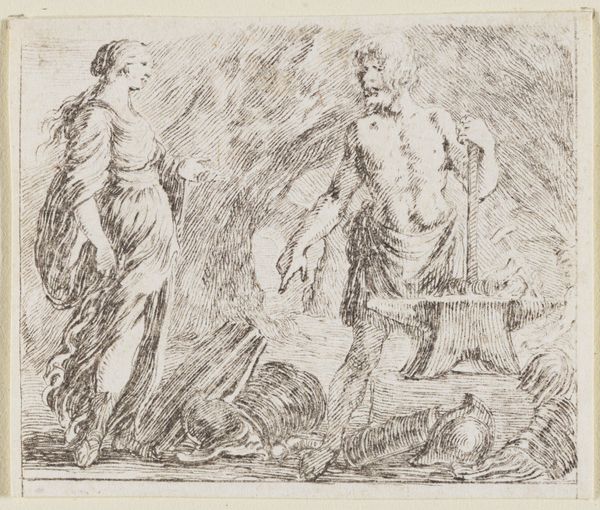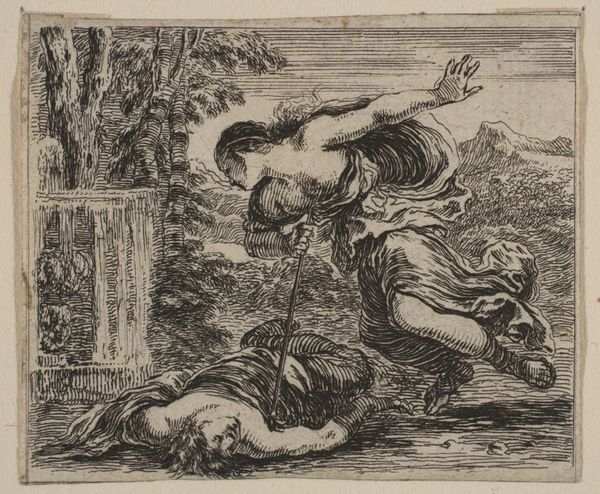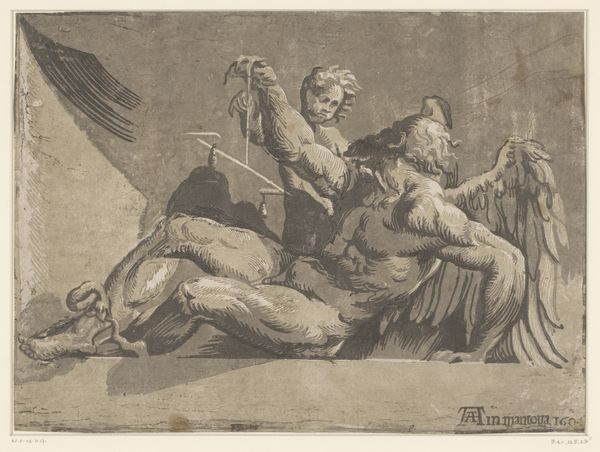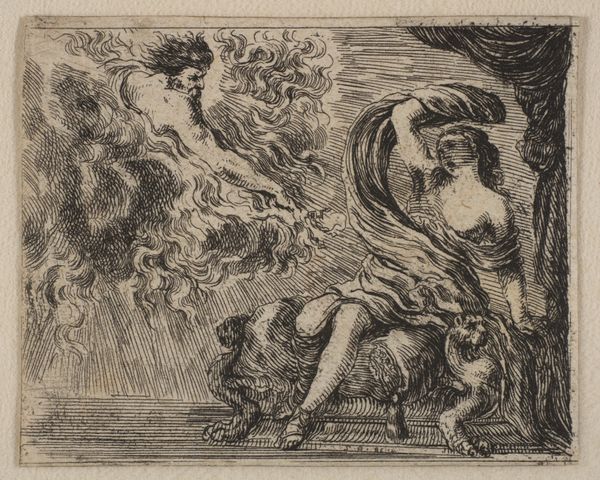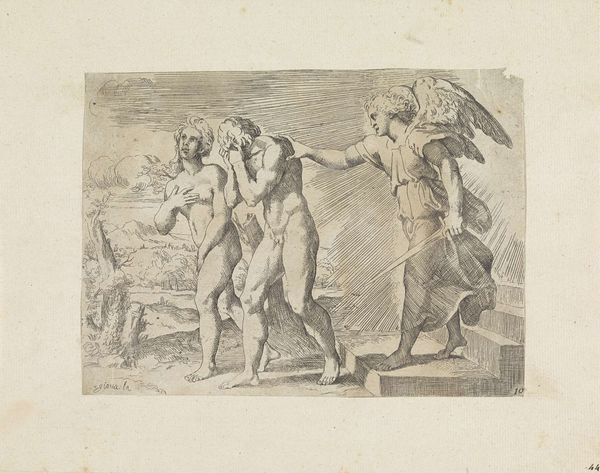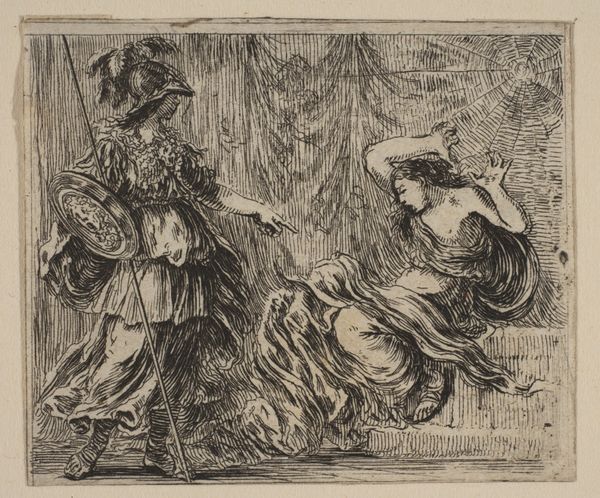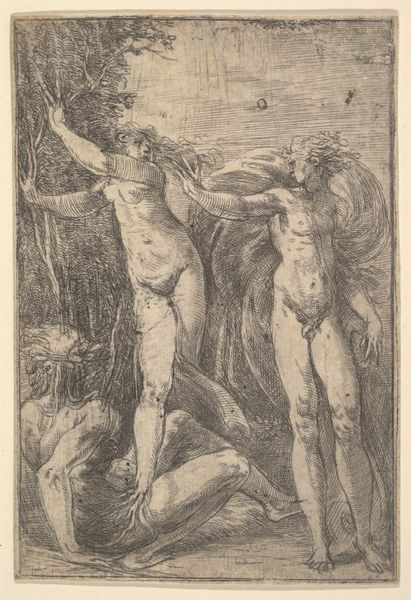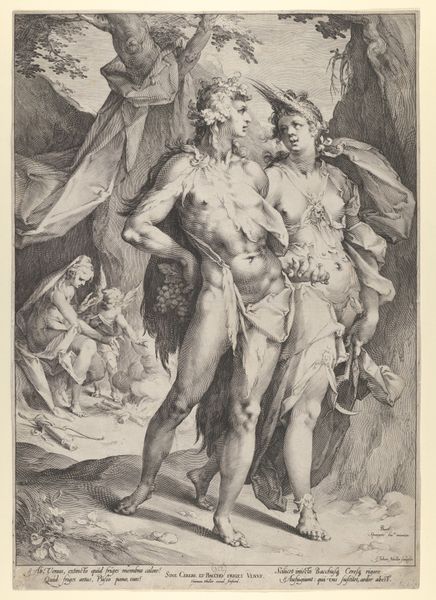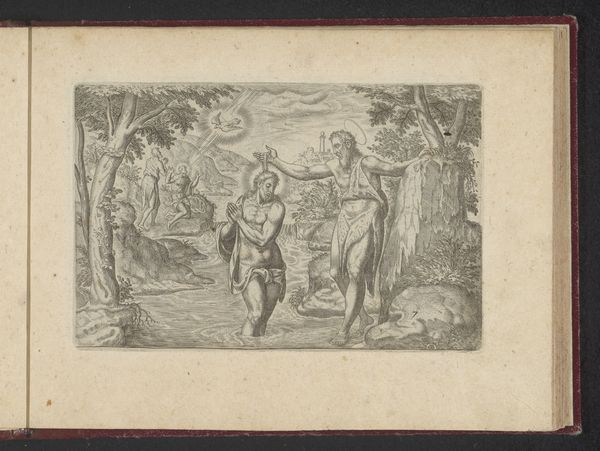
drawing, print, ink, engraving
#
drawing
#
baroque
# print
#
figuration
#
ink
#
line
#
history-painting
#
italian-renaissance
#
engraving
Copyright: Public Domain
Curator: Today we are looking at Stefano della Bella's "Vulcan et Thetis," an engraving made around 1644, currently residing at the Metropolitan Museum of Art. Editor: My immediate impression is one of controlled chaos. There's a lot of energy conveyed through the hatching, yet the figures are rendered with an almost classical serenity. Curator: Precisely! Notice how della Bella employs line – pure, unadulterated line – to create volume and shadow. It's a masterclass in using negative space to define form. The composition adheres to the prevailing Baroque taste for dramatic tension, doesn’t it? Editor: Indeed. Look at Vulcan’s muscularity, defined by such precise strokes that evoke not only strength but the physicality of labor itself. It calls attention to the material and the act of creation; each strike of his hammer on the anvil reverberates through the network of lines. Curator: I'd also draw your attention to Thetis’s posture. She approaches, graceful, poised—a visual counterpoint to Vulcan’s raw energy. The contrapposto stance, borrowed directly from the Italian Renaissance, conveys movement and dynamism. The semiotic meaning of classical forms cannot be overstated. Editor: And look at the strewn armor at Vulcan’s feet! Remnants and refuse – objects shaped by and marked by physical labor. Are we meant to interpret this image not just as a scene of divine craftsmanship but also about labor's imprint? How would it be received in relation to craft during its historical era? Curator: Certainly, the image exists as a meditation on power, desire, and craftsmanship—all carefully balanced within a complex formal arrangement. The texture feels so considered here—the smoothness of Thetis' skin contrasted with the roughness of Vulcan's forge is brilliantly achieved. Editor: Seeing it that way deepens the work. Thank you for the fresh lens. Curator: A pleasure. Delving deeper allows us to admire it anew, doesn't it?
Comments
No comments
Be the first to comment and join the conversation on the ultimate creative platform.
